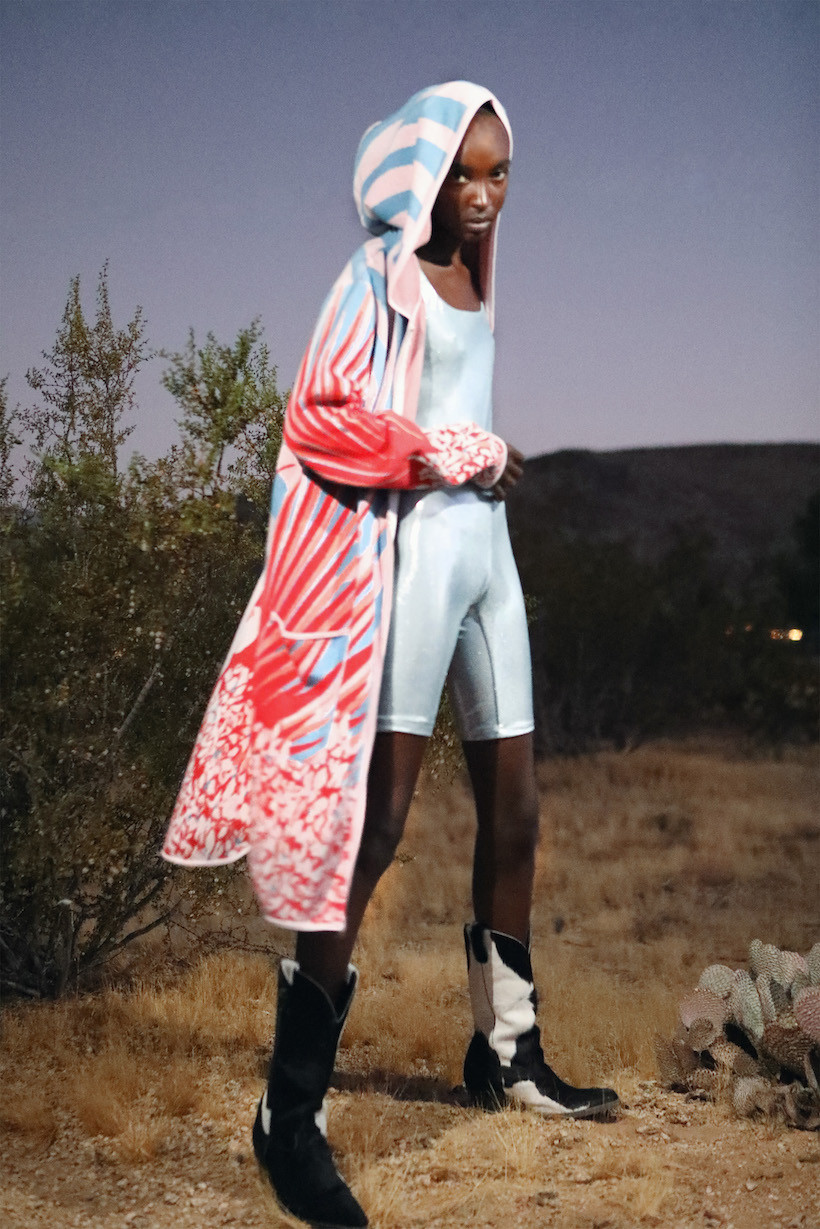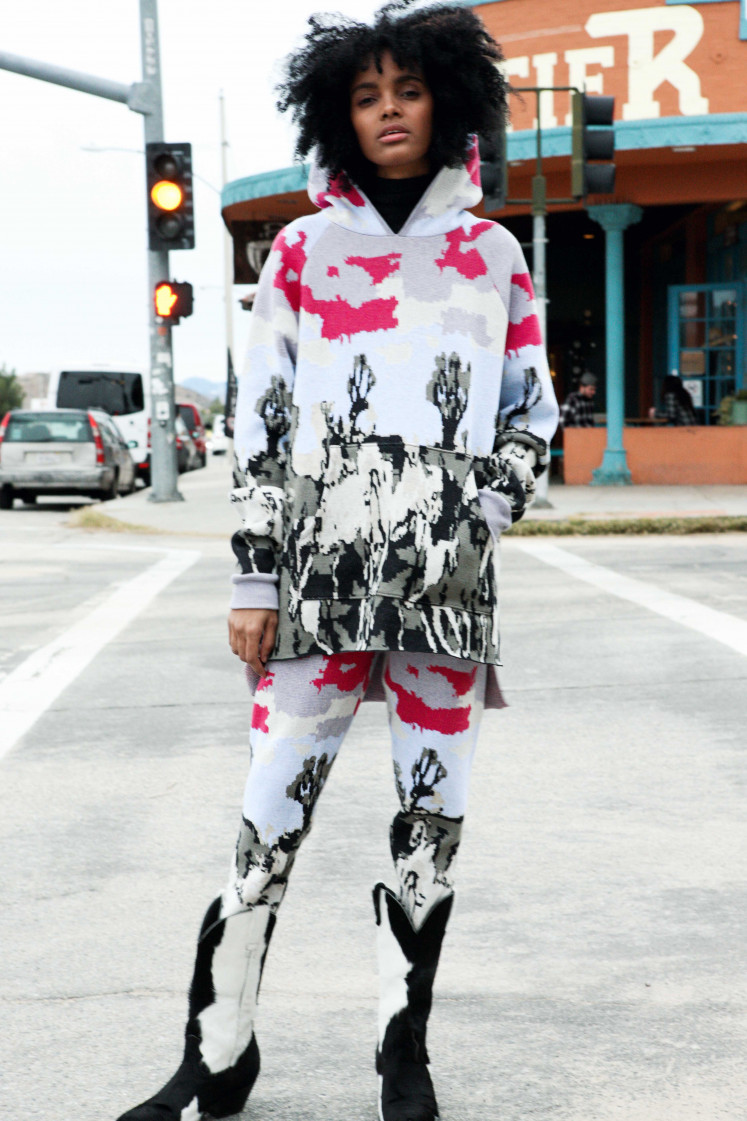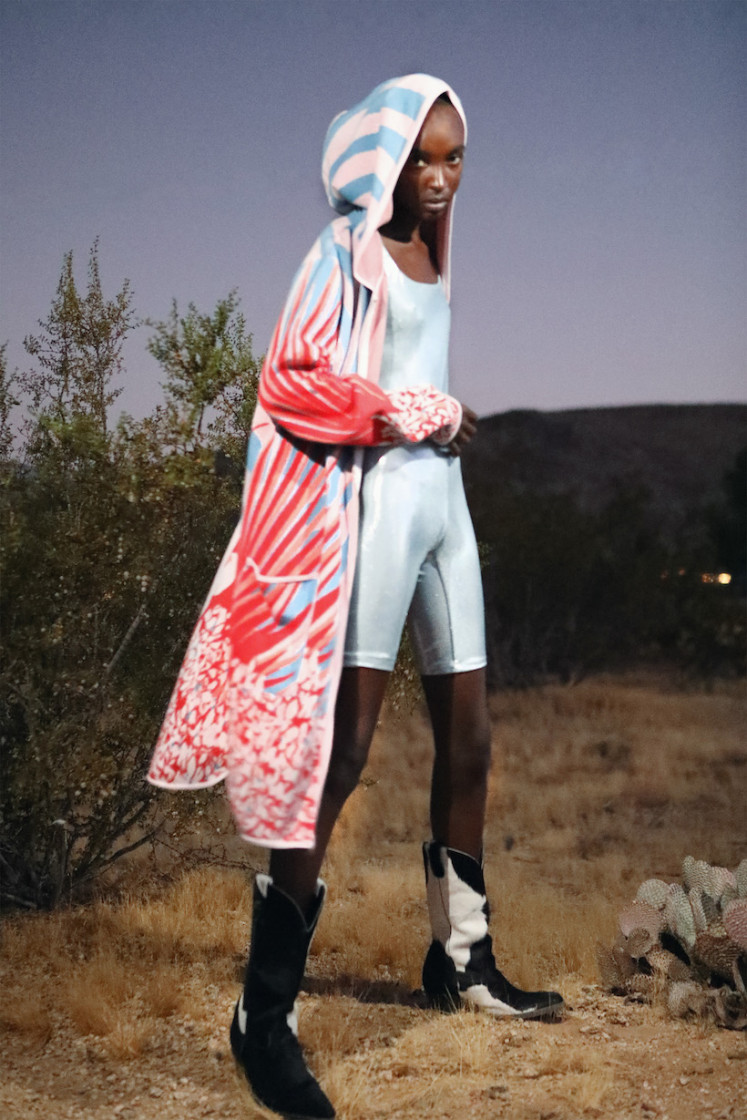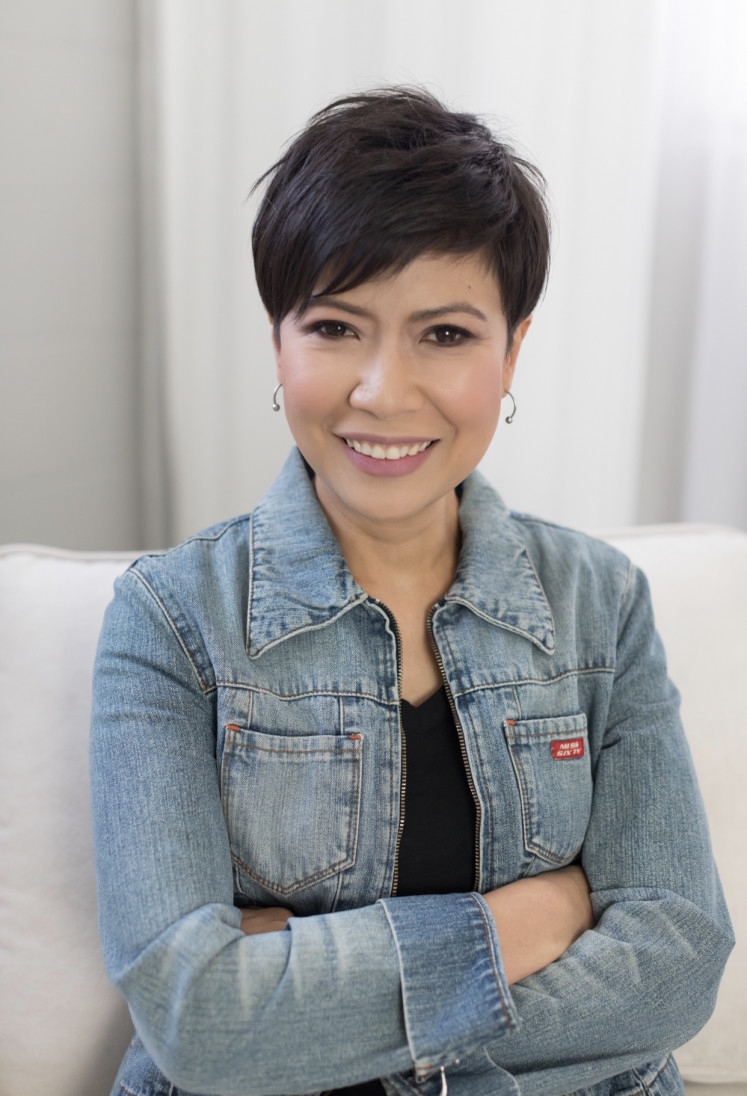Popular Reads
Top Results
Can't find what you're looking for?
View all search resultsPopular Reads
Top Results
Can't find what you're looking for?
View all search resultsDressing Michelle Obama: Indonesian-born knitter Evita Chu climbs the fashion ranks
Among her loyal clients are America’s luxury streetwear brands, such as Baja East, John Elliott and Reese Cooper.
Change text size
Gift Premium Articles
to Anyone
T
he United States presidential inauguration on Jan. 20 was a highly watched ceremony that was broadcast all over the world. Fashion-wise, the event was also a parade of some of the world’s top designers. Among the looks that stole the show was Michelle Obama’s plum suit by Sergio Hudson.
The three-piece pantsuit consisted of a long, tailored overcoat, high-waist pants and turtle-neck sweater that kept the 44th US first lady warm in the harsh January cold. The sweater was produced by PDR Knitting, a private label knitting company owned by Indonesian-born knitter Evita Chu.
“The color [of the sweater] is actually called oxblood,” Evita told The Jakarta Post. “The material is Italian yak wool and cashmere. It’s very soft and warm.”
Fashion designer Sergio Hudson had emailed Evita about the project several weeks before the inauguration and reminded her that everything about it was “top secret”.
“I couldn’t even tell my parents and husband until after the inauguration,” Evita said.
With a trusted assistant, she produced the sweater in her factory in downtown Los Angeles, California.
“Both of us supervised the process from start to finish,” Evita said. “Nothing ever left our sight. And we didn’t put a name on the project, so nobody in my factory knew.”
An outfit by Baja East produced by Evita Chu (JP/Courtesy of Baja East)The designer and his high-profile client were pleased with the result.
“We work with PDR on all our knitwear projects, so when we got the request for a custom sweater for Mrs. Obama, there was not a question of who we should work with!” Hudson wrote in an email dated Wednesday (03/02). “They’re amazing professionals. We’re lucky to have found such an amazing partner.”
From Bandung with determination
Evita was born and raised in Bandung, West Java, as the eldest in her family. Since childhood, the former student of Taruna Bakti (elementary, junior and high school) has always been a high achiever.
“We often hung out at her house after school,” Riri Rengganis, Indonesian fashion designer and Evita’s former classmate at junior high school, said during a phone interview. “She’s always been focused and highly disciplined. She did very well at school and was an excellent pianist.”
Evita and her family moved to the US in 1990 after receiving a Green Card, but she kept in touch with her former schoolmates at Taruna Bakti through a WhatsApp group.
“We’re so proud to know that it was she that produced the sweater for Michelle Obama for the inauguration,” Riri said. “As a designer myself, I know it’s not easy to produce for a fashion designer, especially in knitwear.”
The founder of the fashion labels Rengganis and Indische also admires Evita for her flourishing factory in the US.
“It’s not easy to own and manage a factory in the United States,” Riri added. “They have very strict rules and regulations there. The fact that she does it proves her strong determination and hard work.”
By accident
PDR stands for production, development and resource. The factory occupies a 650-square-meter building not far from LA’s fashion center. Evita helms a team of 14 experienced knitters and administration staff at the factory.
“Actually, I never planned to have a factory like this,” Evita said.
After finishing high school in Los Angeles, Evita’s parents encouraged her to take a business course. So, Evita went to the University of Southern California, majoring in business entrepreneurship.
While studying, she and her fashion-loving mother opened a bridal retail store in LA.
“It was a good business for about three years until a big cookie-cutter bridal gown franchise came into town and monopolized [the market],” she said.
Evita and her mother then sold their business, but the experience piqued Evita’s interest in fashion manufacturing.
“I thought if I became a manufacturer, I could be on the other side of the fence, selling my stuff to retailers,” she said.
An outfit by Baja East produced by Evita Chu (JP/Courtesy of Baja East)Evita then decided to study apparel manufacturing at the Fashion Institute of Design and Merchandising (FIDM) in Los Angeles. Two years later, after graduating magna cum laude, Evita joined a knitwear manufacturing company based in the same city.
“My ex-boss was an Italian,” Evita recalled. “He was very patient in teaching me everything.”
According to Evita, knitwear production is very different from the usual cut-and-sew. Every yarn comes with a different fiber composition and different characteristics. A knitter has to know about each yarn’s shrinkage, stretchability, recoverability and water absorbency to be able to produce good knitwear.
“There are basically more science principles in knitwear,” Evita said with a laugh.
Evita’s second job was with the Alliance Knitters in LA, where she learned more extensively about knitwear production.
“The design studio was in LA, but the production was in Dongguan, China,” she said. “My job description required me to travel to their factory quite often, where I learned all about yarn spinning, yarn dying and handloom knitting.”
This set of skills proved to be useful when she started her own company a few years later. But she had not planned it at all.
In 2006, two car accidents back-to-back caused Evita to quit her job as a knitwear designer for a domestic manufacturing company.
“When I was rehabbing at home, a friend of mine asked me if I could do his collection,” she recalled. “And then I said, yeah, I’m home, I can help you out. I already had my handloom machines at home. I know how to knit with them. So, I started making sweaters for him. After I delivered his [order], he told his friends. His friends told his friends. It just snowballed from there.”
Today, Evita’s sweaters have been seen on top fashion models, as well as Hollywood celebrities. Also among her loyal clients are America’s luxury streetwear brands, such as Baja East, John Elliott and Reese Cooper.
Indonesian knitter Evita Chu is making a name for herself in the international fashion scene (JP/Courtesy of Evita Chu)“Evita goes above and beyond just manufacturing knitwear. She’s a creative at heart who has mastered every single technique there is to know about knitwear and is always coming up with new ideas of her own and open to creatively making the ideas in my head a reality,” Scott Studenberg, founder and creative director of Baja East, wrote in an email. “Applying those qualities together is why designers like me work with her.”
So, what’s next for Evita? Would she consider creating her own knitwear brand?
“I would lie if I said I had never thought about it, but I just don’t have time,” the 47-year-old said with a sigh. “Maybe, if I didn’t have a family, [I would do it]. Now, I just want to solidify [my company]. I want it to be known as a company that delivers quality.”
In her spare time, Evita plays with her pet chickens and assists both her children with their homeschooling.
“Both of them are fluent in Indonesian,” Evita said.
According to Evita, their family speaks in Indonesian at home. Her mother, who also lives in the same city, often comes to visit and cook them Indonesian food such as rendang (meat slow-cooked in coconut milk and spices), sayur asem (vegetable and tamarind soup), karedok (raw vegetable salad in peanut sauce) and saur lodeh (vegetables in coconut milk soup).
From time to time, Evita and her husband also bring their son and daughter to Indonesia and familiarize them with their roots. Just before the pandemic, the family took a one-month trip to Jakarta, Bandung and her husband’s hometown, Surabaya in East Java.
“In Jakarta, we visited the Textile Museum and took a batik class,” she said. “In the class, we learned to stencil [the batik pattern] on the cloth, apply hot wax with a canting [pen-like tool used in batik-making to apply hot liquid wax] and then dye the fabric. It was a lot of work, but my kids loved it. Now they understand why a piece of batik costs so much.”
Having lived so far from Indonesia for so long, does Evita miss her motherland sometimes?
“I miss the people,” she said. “They’re so friendly and welcoming — and they’re genuine. Maybe once I retire, I’ll return to Indonesia.”













